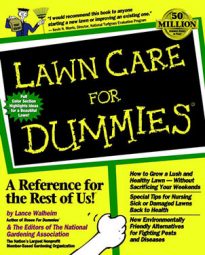Laying sod is a gratifying experience—you get a new, green lawn in no time! The time to lay sod is early morning before it gets too hot. The soil in the planting area should be moist, not soggy or dry. Water thoroughly one or two days before the sod is delivered so that the top several inches of soil are wetted. Then allow time for the soil to drain so that it’s not muddy and is workable.
Fertilize the soil.
Before you begin laying the sod, apply fertilizer to the entire area after the final leveling. No need to rake the fertilizer into the soil — you lay the sod right on top of it.
Make sure the sod is moist.
The sod should be cool and moist to the touch, but not dripping wet. Sprinkle the sod quickly to keep it cool, but don’t soak it. Then, as soon as you’ve laid down the sod, soak it with impunity. You can even start watering before all the sod is laid.
Choose the right place for the first row of sod.
Start laying sod along a straight edge, such as next to a walk or driveway, so that everything starts off straight. If your lawn has an irregular shape, run a string across the center of the lawn area, with each end of the string attached to a stake. Lay sod on either side of the string.
Unroll the first piece of sod.
To avoid roughing up the planting surface or the new sod, kneel on a board or piece of plywood as you work. Make sure that you place the edges of the sod tightly against any hard surfaces, such as cement edgings, walks, or driveways. Otherwise, you have empty gaps where the edges of the sod can dry out.
Set the loose end of the second piece tightly against the end of the first piece and unroll it.
Handle the sod with care so that it doesn’t tear or fall apart as you move it.
Cinch the edges as close as possible without overlapping or stretching the sod. Stagger the ends as if you’re laying brick
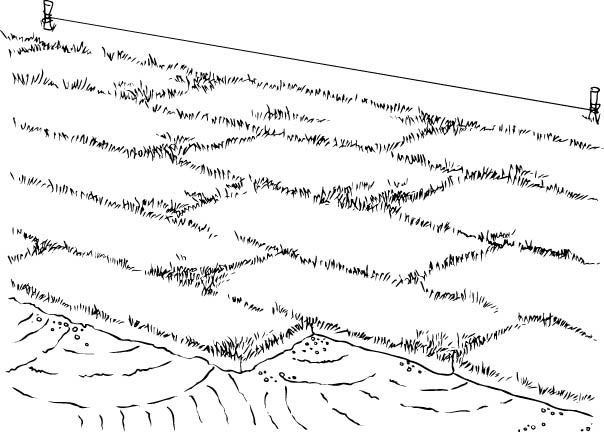
The edges of the sod are the first part to dry out.
Level the planting surface with a rake as you go.
If part of the planting surface gets roughed up, level it with a steel rake. Otherwise, you’ll have a bumpy lawn. Occasionally, you may need to lift a piece of sod, rake level, and then replace the sod.
When you come to the end of a row, roll the sod out over the edge and cut it to fit with a sharp knife.
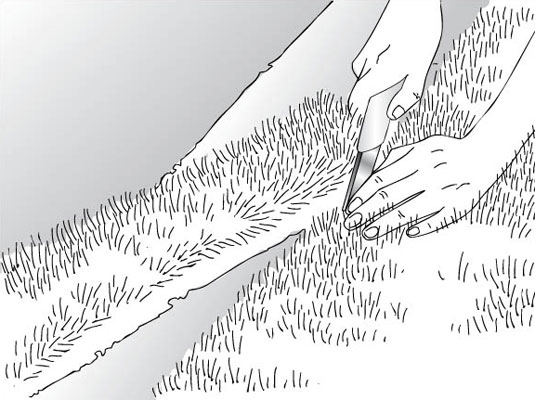
If you have in-ground sprinklers, cut small holes in the sod to fit it around them.
After you lay out all the sod, place soil in any open seams between pieces of sod.
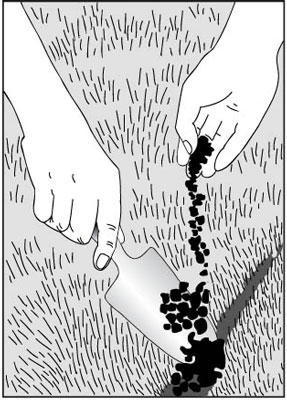
Potting soil is ideal because it’s weedfree, or you can use organic matter such as peat moss. Don’t try to fill the spaces with small pieces of sod, which dry out too fast and are likely to die.
Roll the sod with a water-filled roller.
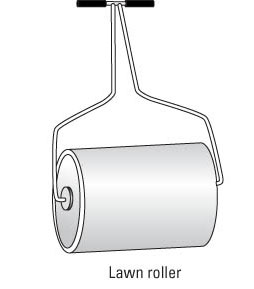
To help level the sod and ensure good contact between roots and soil, you need to roll the sod. Use a roller that’s half full of water. Roll perpendicular to the length of the sod.
Water the lawn thoroughly, applying enough to wet the soil 6 to 8 inches deep below the sod.
Probe the soil under the sod with a stiff wire to see how far the water penetrates. If you’re planting a really big lawn or if it’s hot or windy, you may need to use a hose to hand-sprinkle dry areas of the rolled out sod before you finish planting.

